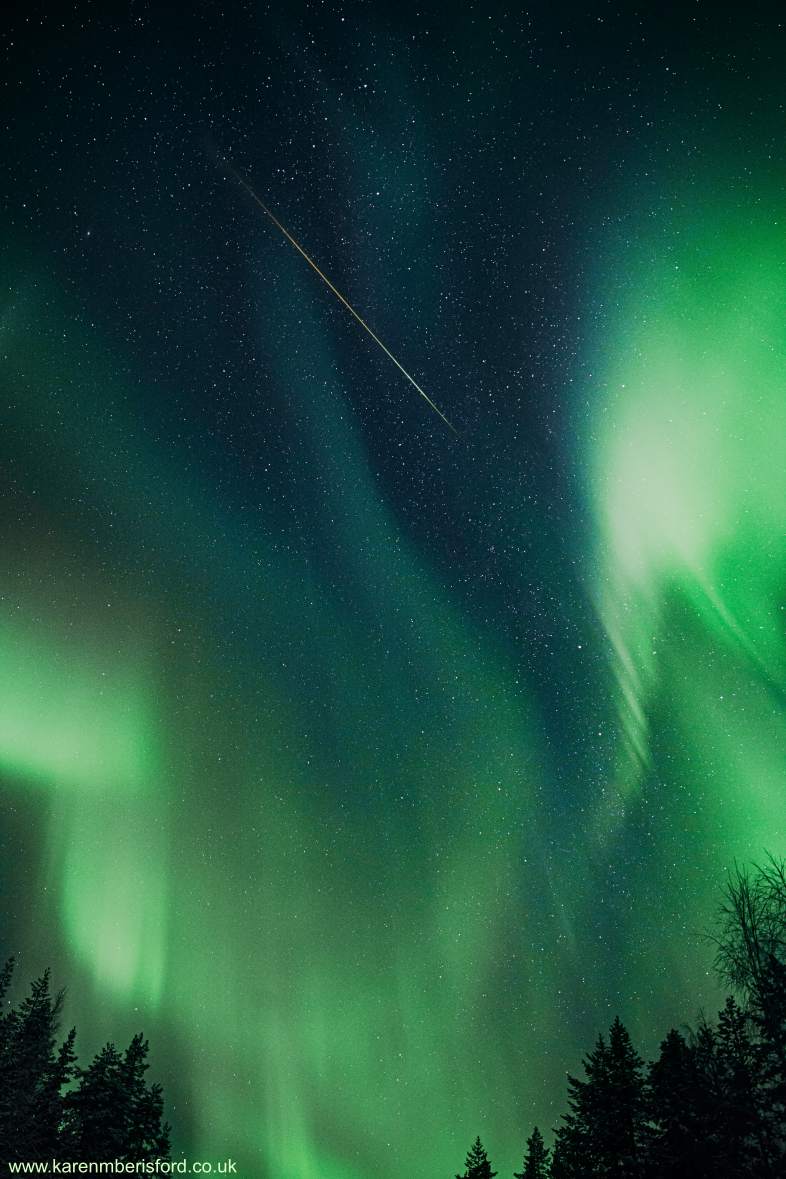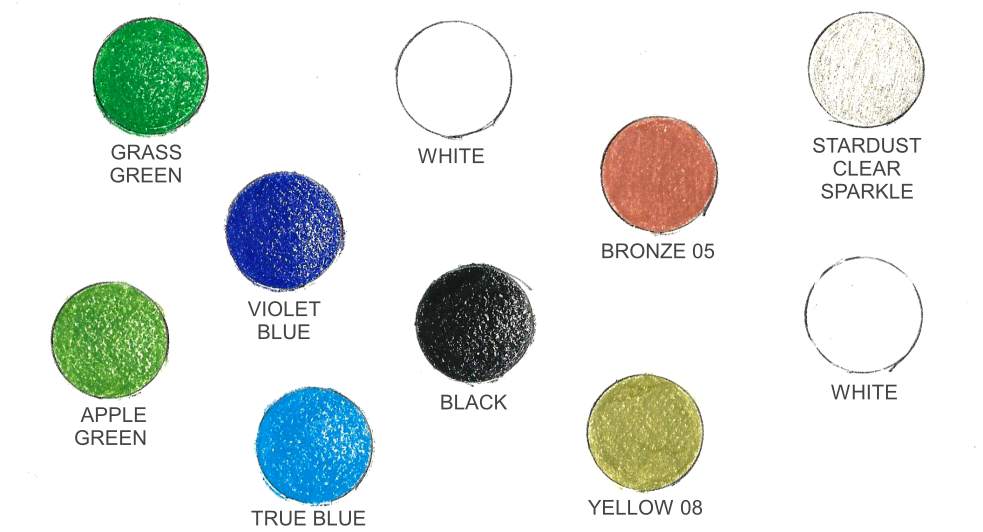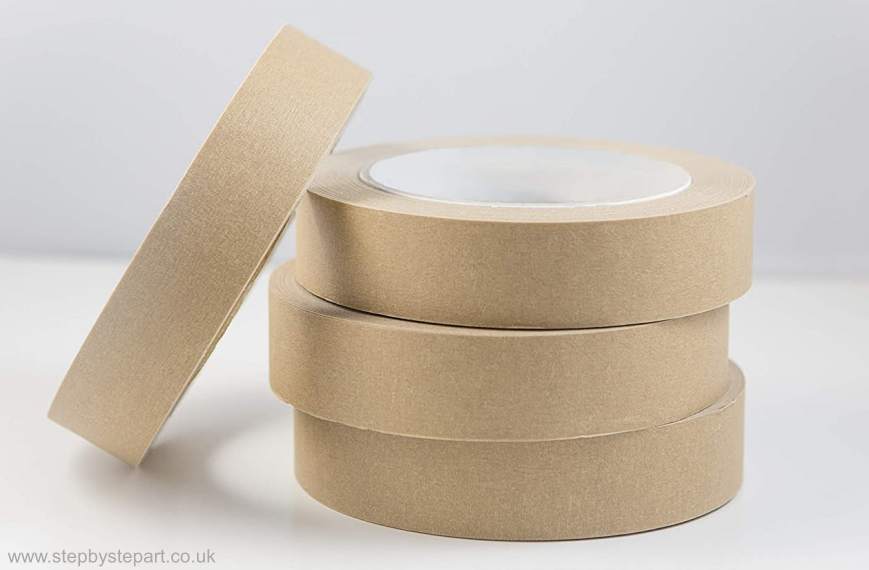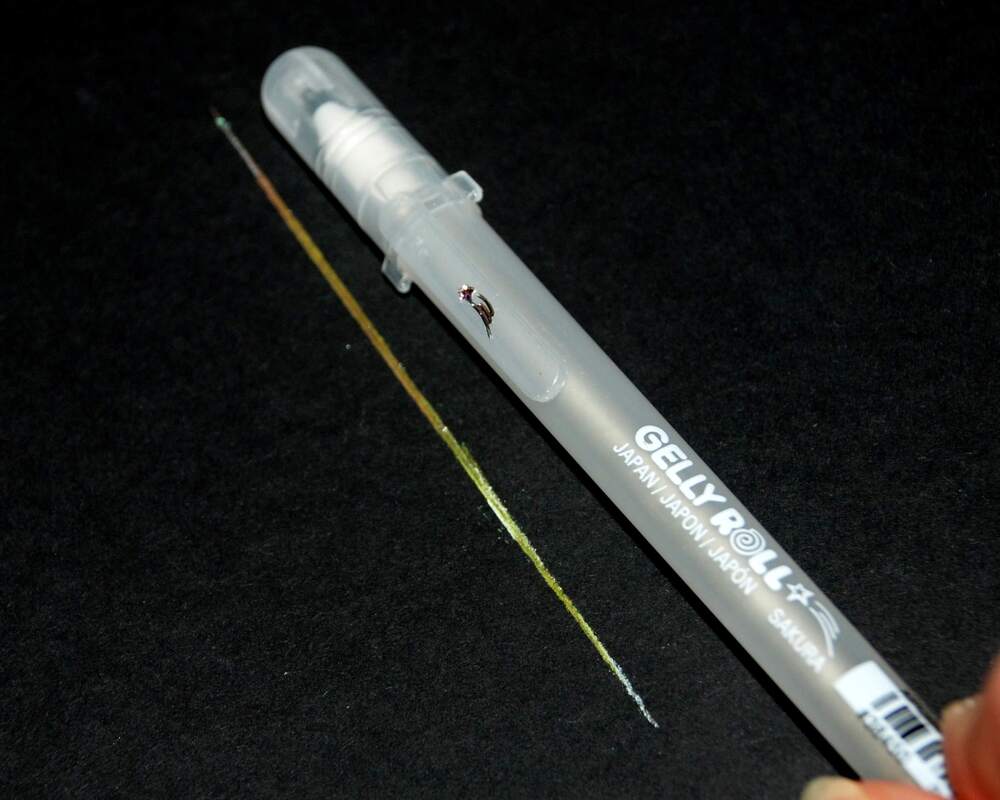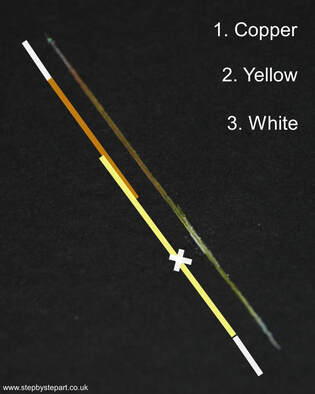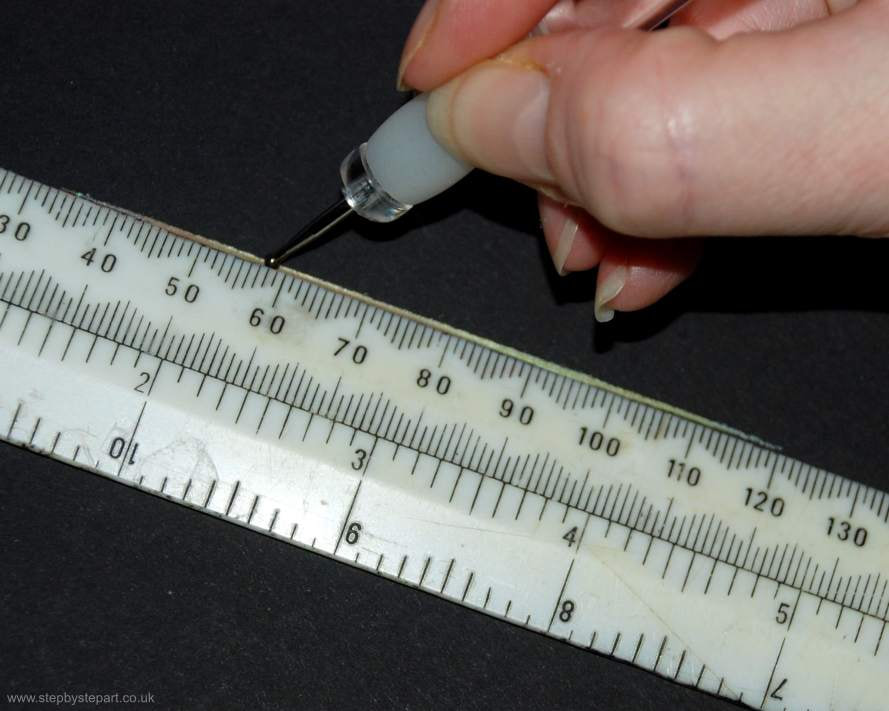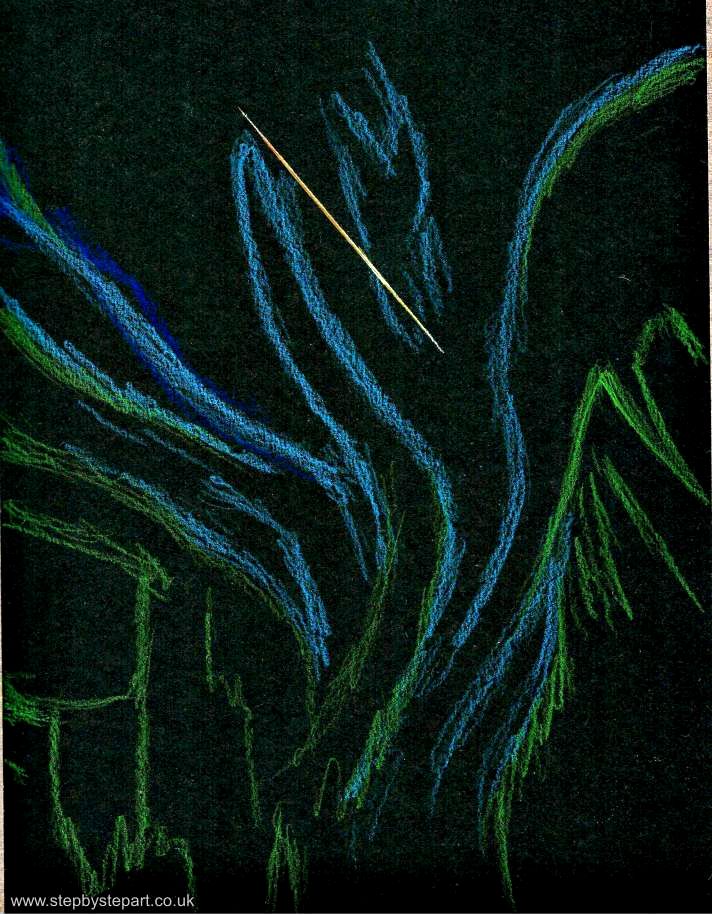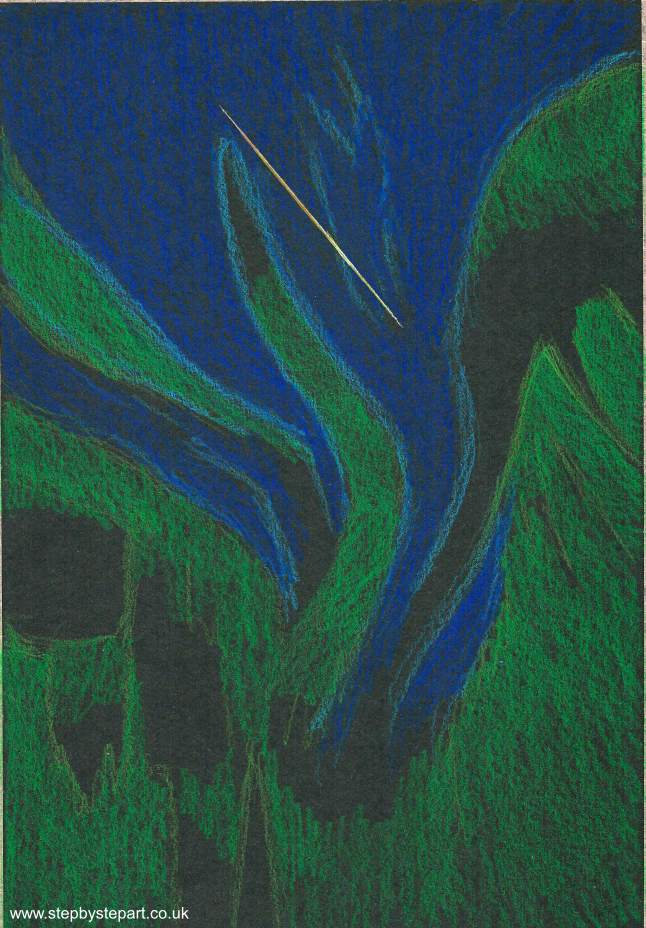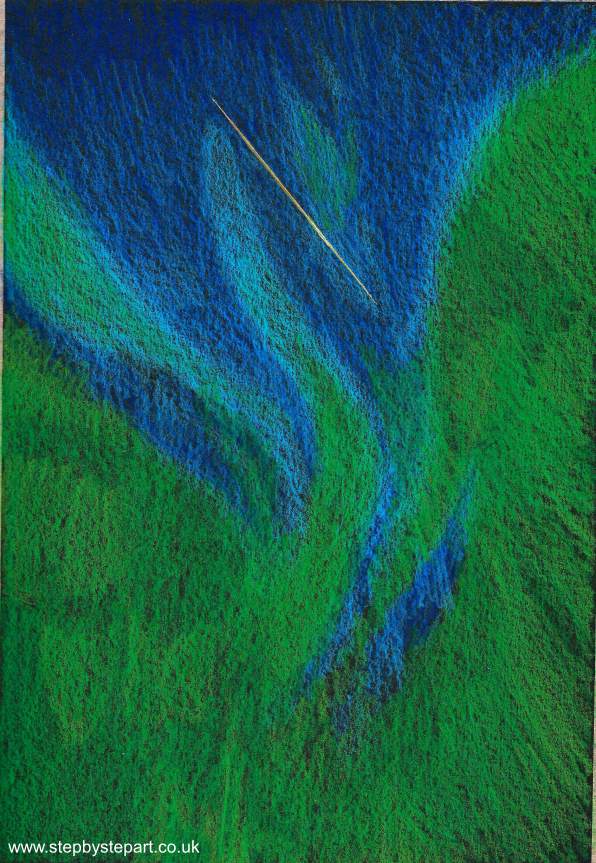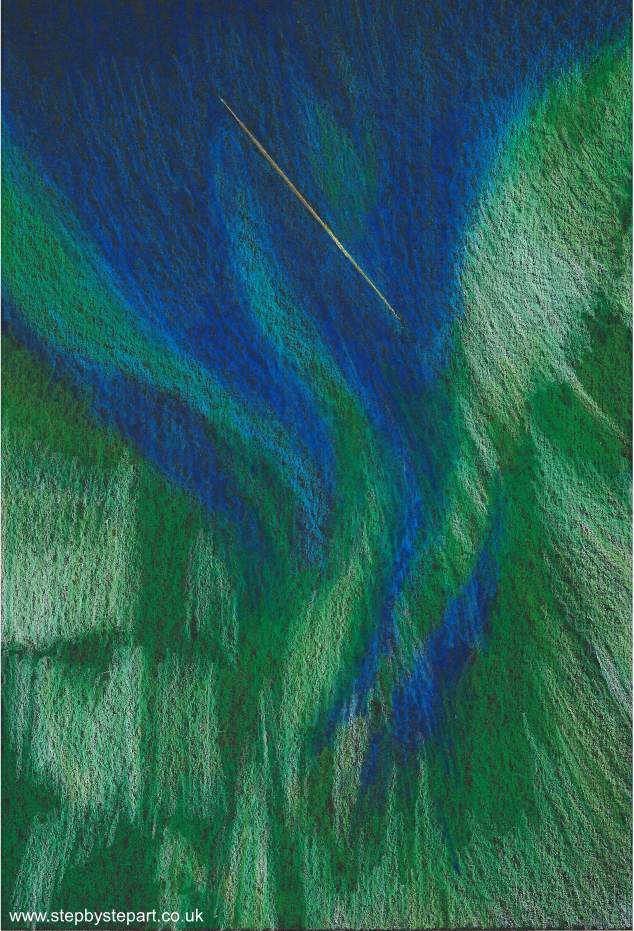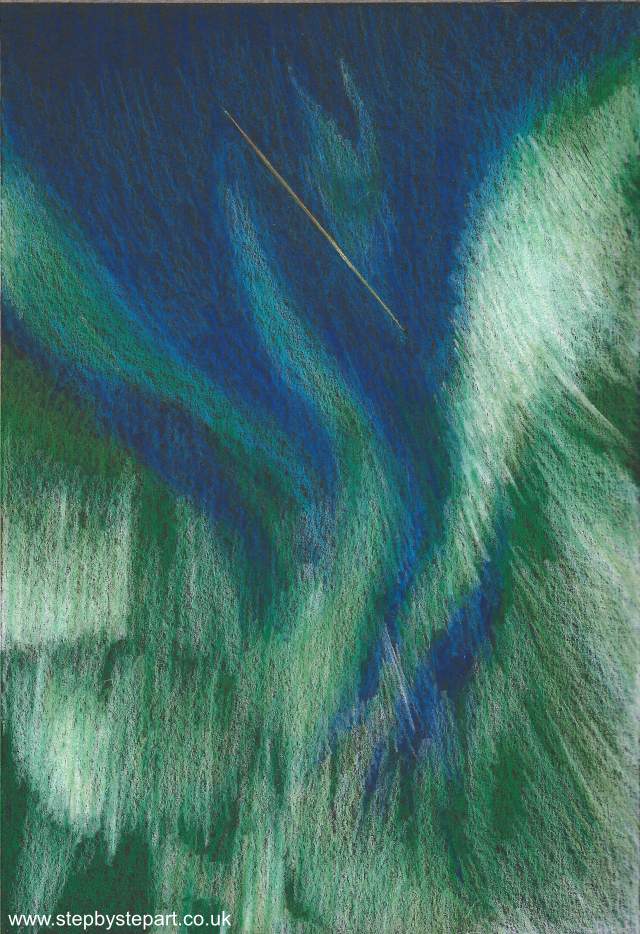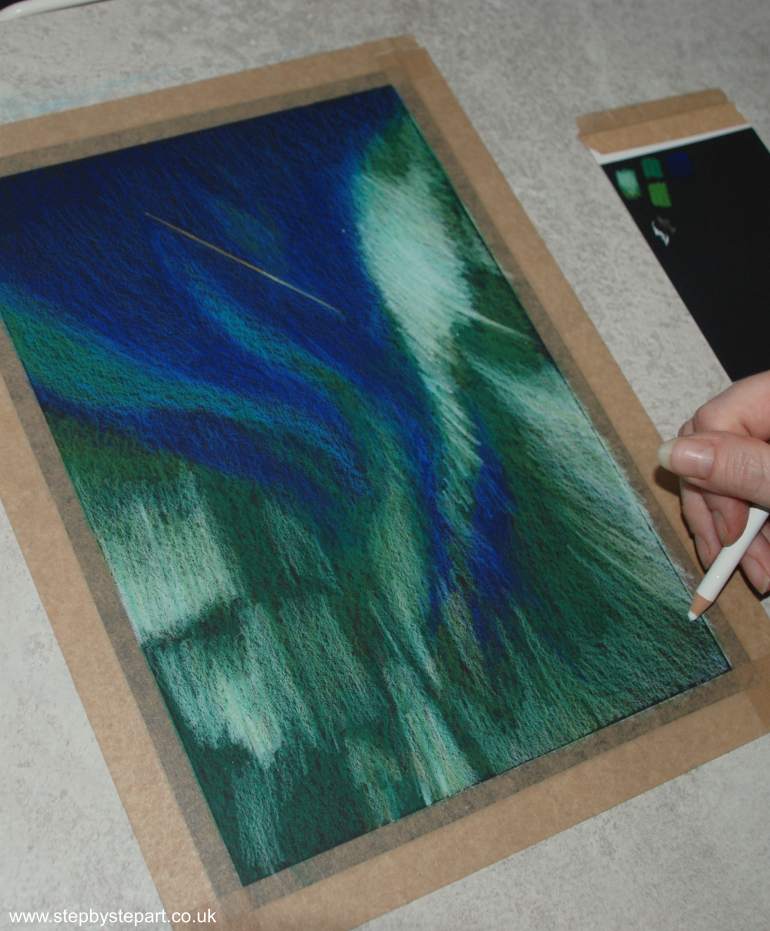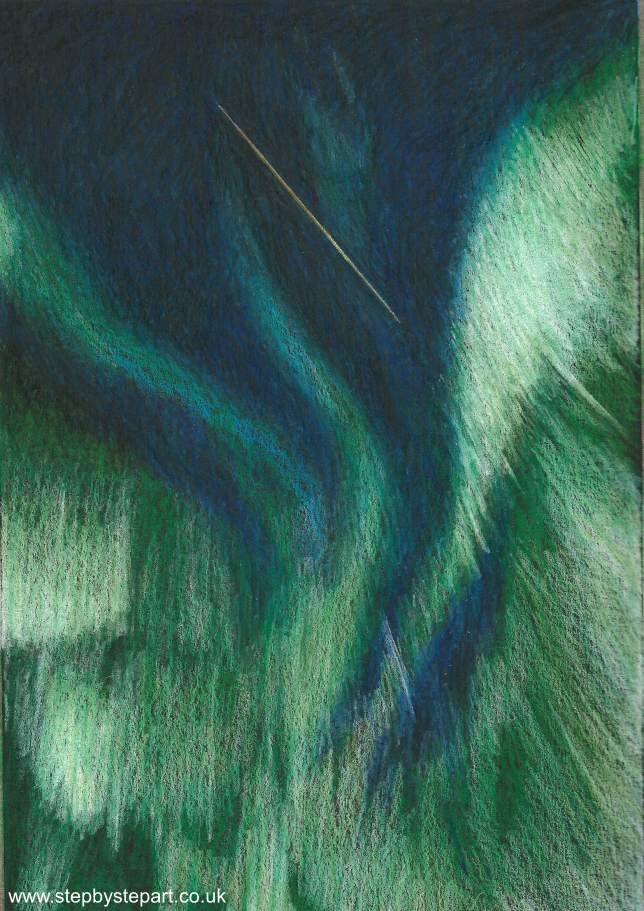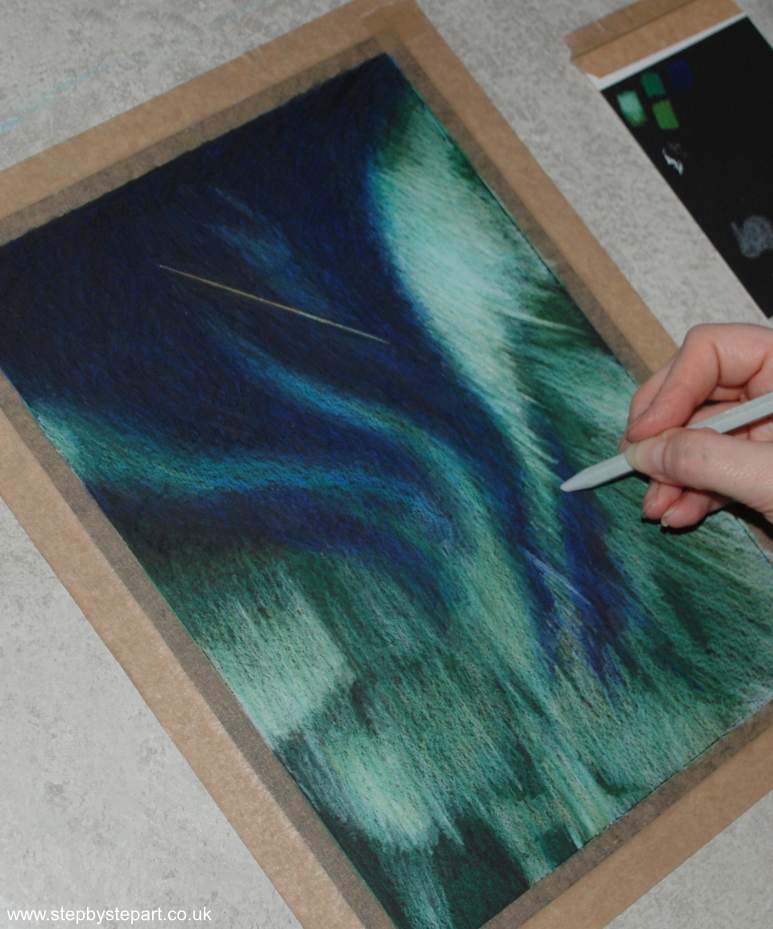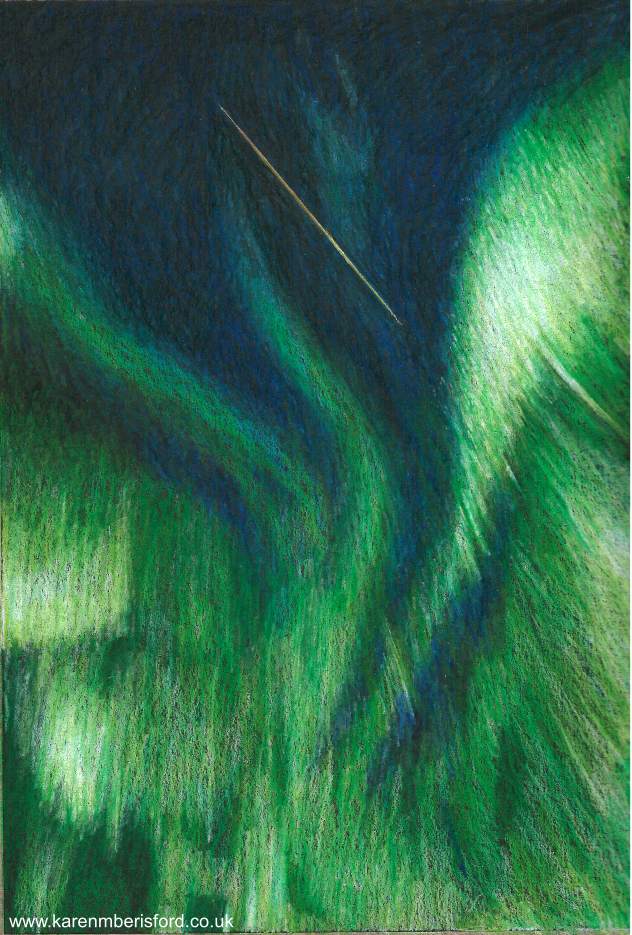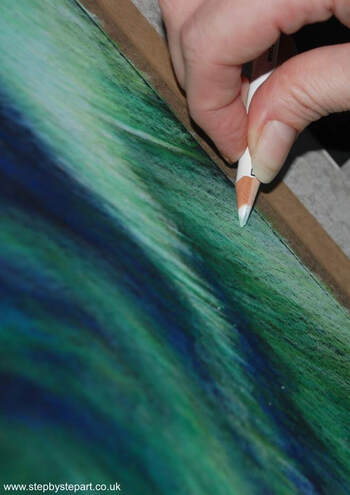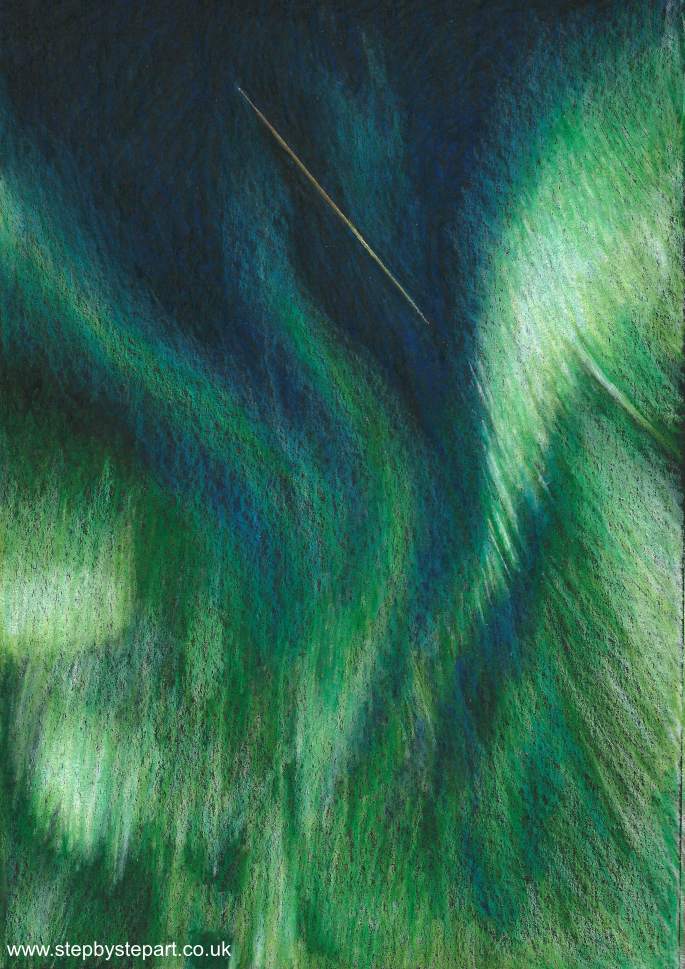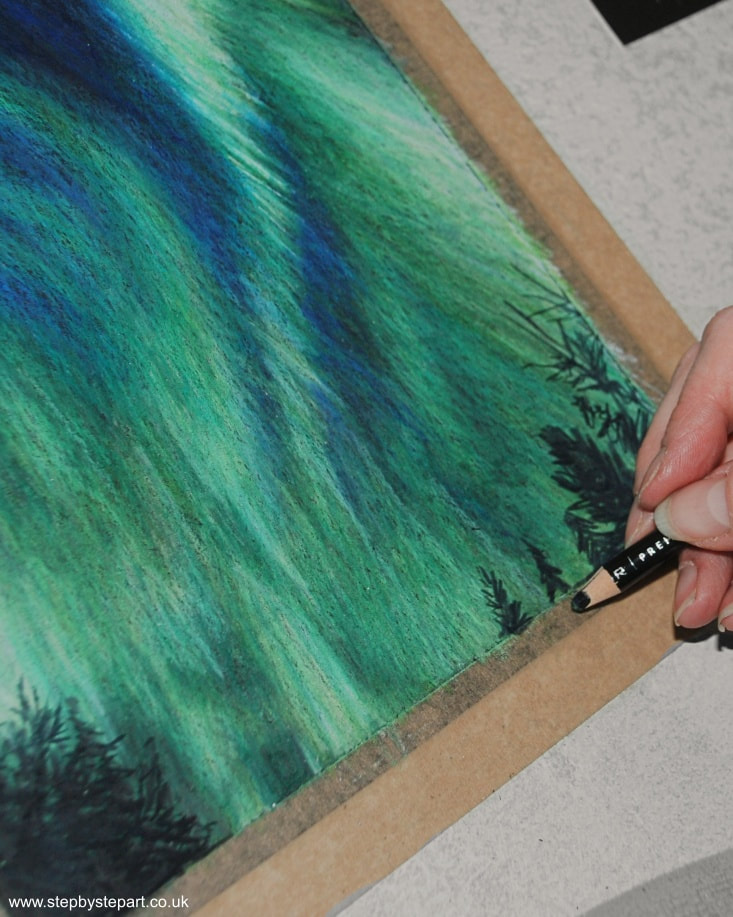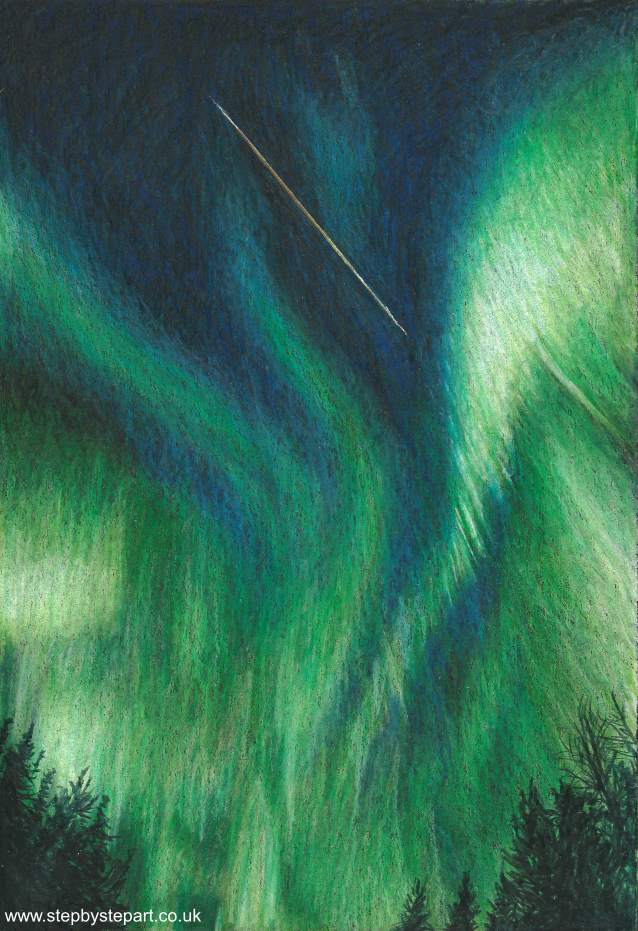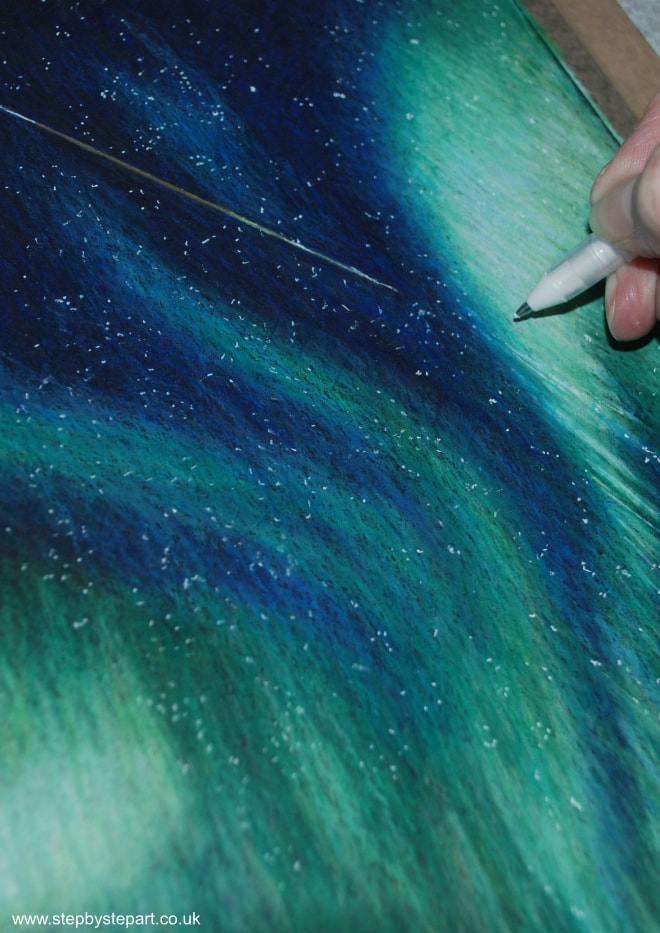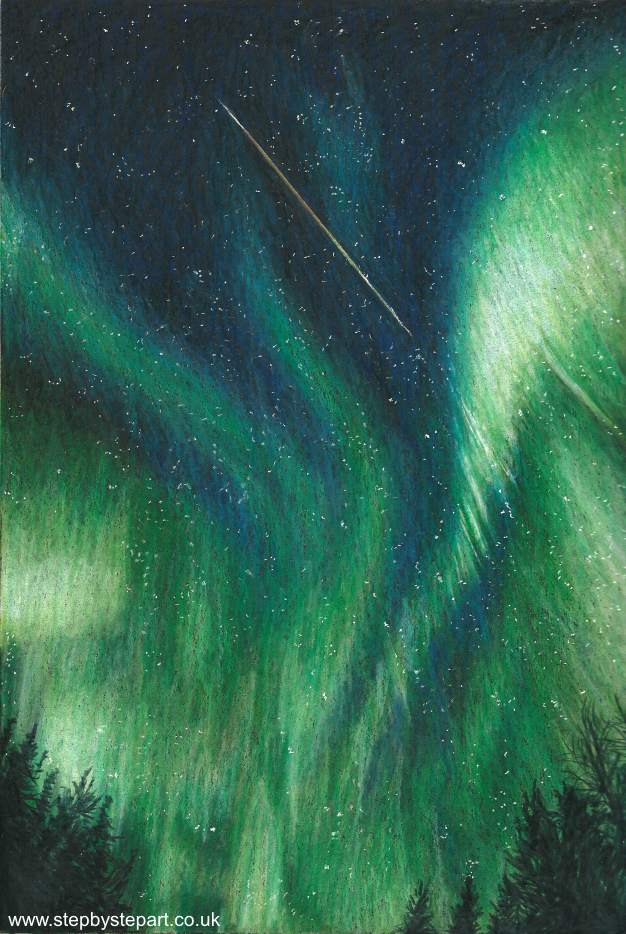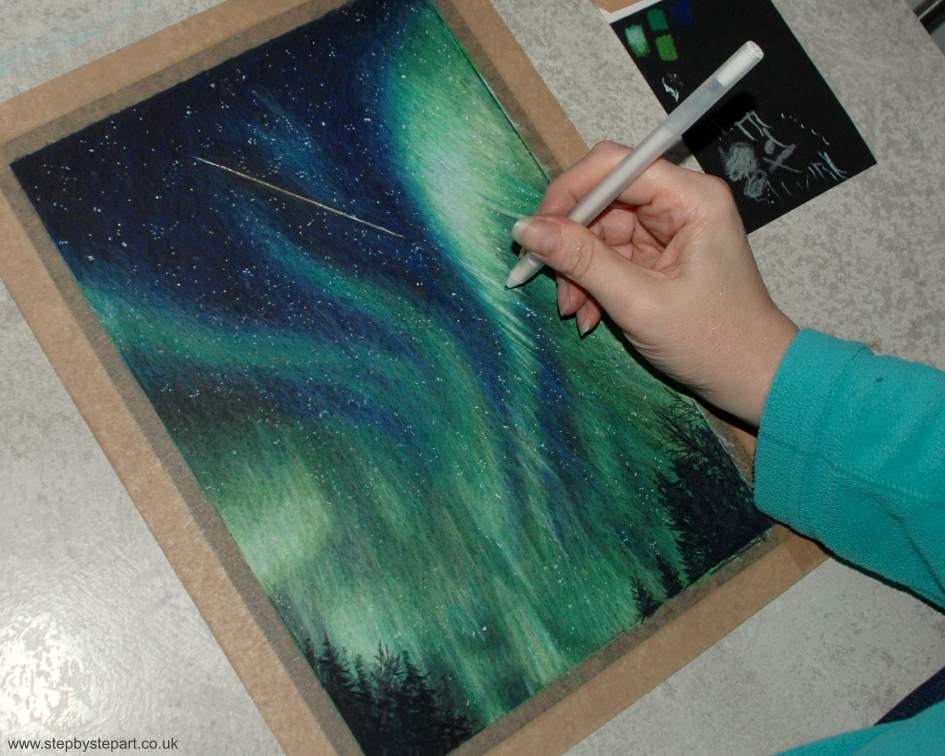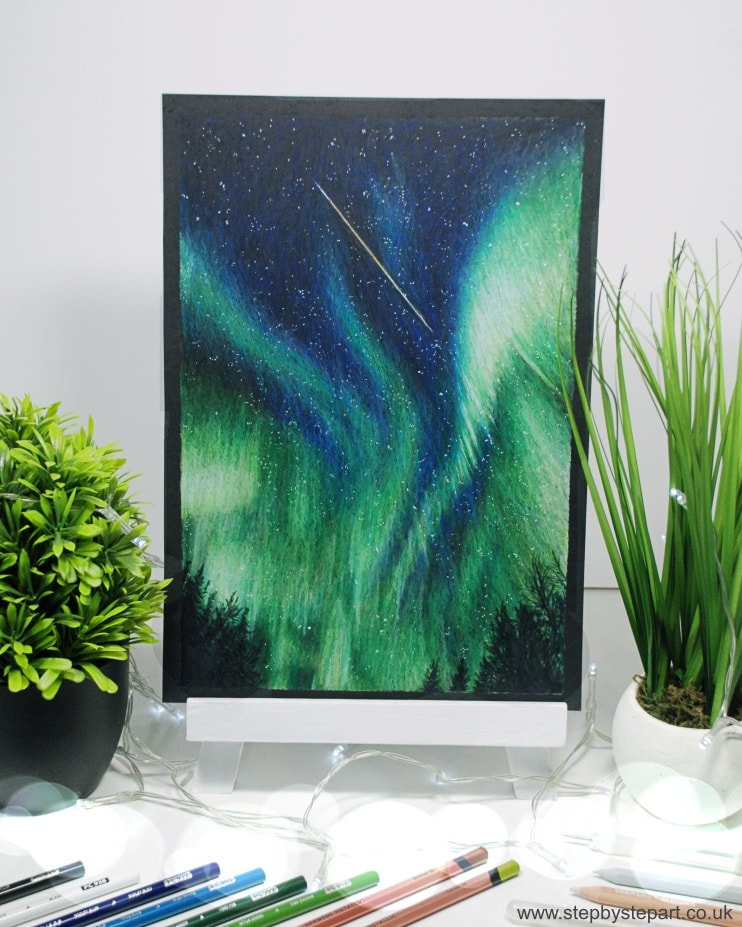NORTHERN LIGHTS
AURORA BOREALIS
A tutorial for coloured pencil artists
Paper Used: Daler Rowney Canford Black
Pencil ranges Used: Main: Prismacolor Premier
Additional products used: Derwent Metallic pencils & Sakura gelly pen
Pencil ranges Used: Main: Prismacolor Premier
Additional products used: Derwent Metallic pencils & Sakura gelly pen
This tutorial provides a way to draw effortlessly using coloured pencils, especially if you are new to the medium. The Northern Lights, or Aurora Borealis, is an amazing phenomenon that occurs when charged particles of the sun interact with atoms of the upper atmosphere. Images of the borealis are spectacular, and it is a dramatic subject to recreate. You can achieve excellent results without any previous experience in the medium. To keep the tutorial easy, you only need six colors. Simply leave yourself open and expressive throughout. The secret is the efficacy of layers, and less precision. The blending process will stimulate your work prior to adding fine details of trees and stars.
We use the Prismacolor Premier pencils and the Daler Rowney Canford black paper in this tutorial. Your products do not need to be a precise match. Select colours from your own collection that look very similar to those used here. You can substitute Canford paper with another smooth black paper.
The reference image can be found below, which you can screen grab and print out or view on a tablet whilst reading the instructions on a smartphone or computer.
We use the Prismacolor Premier pencils and the Daler Rowney Canford black paper in this tutorial. Your products do not need to be a precise match. Select colours from your own collection that look very similar to those used here. You can substitute Canford paper with another smooth black paper.
The reference image can be found below, which you can screen grab and print out or view on a tablet whilst reading the instructions on a smartphone or computer.
This tutorial was originally created for the Colored pencil Magazine 'Workshop series' from April 2022 and has been reproduced here for inclusion in my mini tutorial sections.
I hope you enjoy this tutorial and if you would like to request a subject for inclusion of a future tutorial, please get in touch!
I hope you enjoy this tutorial and if you would like to request a subject for inclusion of a future tutorial, please get in touch!
The products you will need1. Indent/Embossing tool
2. Sakura Gelly pen - Shimmer (Optional) 3. Sakura Gelly pen - White 4. Colourless Blender 5. Pencil Sharpener 6. Soft Brush 7. Prismacolor Premier pencils - Black (PC935) - White (PC938) - Apple Green (PC912) - Grass Green (PC909) - True Blue (PC903) - Violet Blue (PC933) 8. Derwent Metallic (Optional) - Yellow (08) - Bronze (05) Colour chartWe keep the colours in this tutorial to a minimum since it is much easier to create light and dark values by mixing and mixing. We used the Prismacolor Premier range, the Derwent Metallic and the Sakura Gelly roll pen. The metallics and the gelly roll pen are both optional and you can use a brand you own. Simply select the pencils that match the colours in the chart below, but it is not necessary that they are accurate.
*If you do not have a embossing tool, you may use a sharp object such as a wooden skewer. |
IMPORTANT TIPS:
* Ensure your pencils are sharp before you begin as this will allow for finer hair and create a more realistic look.
* When applying your undertones at the beginning, use a blunt pencil to avoid harsh lines so you can soften them easily when blending.
* To avoid transferring natural oils onto your drawing from your hands, have a clean sheet of paper to lean on whilst applying colour. Natural Oils from your skin can damage your artwork which you may not be able to repair.
* Ensure your pencils are sharp before you begin as this will allow for finer hair and create a more realistic look.
* When applying your undertones at the beginning, use a blunt pencil to avoid harsh lines so you can soften them easily when blending.
* To avoid transferring natural oils onto your drawing from your hands, have a clean sheet of paper to lean on whilst applying colour. Natural Oils from your skin can damage your artwork which you may not be able to repair.
